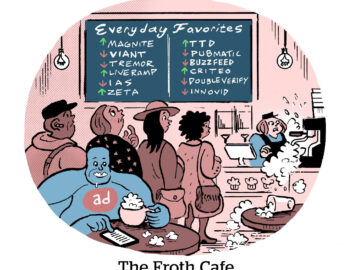

Thank you!
Just one more thing before you go...

Why Machine-Generated Emails Are Ad Tech’s Next Nightmare

By Keith Petri, CEO, lockr
If you don’t have the email address of the person you’re targeting, your digital ad isn’t working as hard as it should. Period.
It’s no secret that if an ad isn’t associated with a persistent ID of any type (cookie, device ID or hashed email), it loses more than half its value. Regardless of whether you’re a publisher, a brand or a marketer, as cookies and device IDs continue to disappear, this problem will continue to worsen. As a result, publishers and retailers are desperate for the one identifier that is not going away: email addresses.
But consumers are getting wary: they’re fighting against persistent requests for email addresses by turning to machine-generated email services to give them some sense of anonymity on the web. Many have turned to services such as Apple Hide My Email or FireFox Relay to hide their identities. Consumers want a relationship with brands and retailers, but they don’t want to give away the sanctity of their inbox.
Should they have to?
The problem with anonymous email addresses
Machine-generated emails are reminiscent of ad blockers. If we don’t get the problem under control, they could threaten the entire free, ad-supported internet.
Introduced in 2002, ad blockers were once something only the most ardent ad evaders installed. But that has changed, with as many as 42% of internet users adopting ad blockers. Now, we’re seeing machine-generated email addresses threaten advertisers in the same way that ad blockers have impacted publishers’ businesses. Simply put, both ad blockers and machine-generated emails interrupt the efficiency of inventory monetization.
More autonomy for consumers
Email is arguably the most important personal identifier over someone’s lifetime. It’s the first place many people look in the morning and the last place they go at the end of the day. It’s no wonder consumers are reluctant to share their real addresses. As such, marketers should only expect the adoption of machine-generated email services to grow – unless we do something about it. The answer is obvious: give consumers control over communication.
Consumers need a way to manage the marketing messages they receive. They need to be able to opt in and out of emails easily. They need to know when they are being retargeted and should be able to opt out of that, too. We need to redefine the entire value exchange so that consumers can control all their own data, all the time.
If we don’t, machine-generated emails will only gain traction, and that’s an ad tech crisis in the making.
View the original article in Adexchanger.

Machine-Generated Email Cost Calculator
Unlock additional revenue by integrating with Identity lockr.
Select your industry vertical.
How many registered users or newsletter subscribers do you have?
Average monthly emails sent to each subscriber per month?
What is your average email open rate?Optional
What is your average email click rate?Optional
Has lockr previously analyzed the machine-generated emails in your first-party data?
What was the percentage?
Enter your RPM (page revenue per 1,000 sessions).
What is your average monthly subscriber growth rate?
What is your anonymous web visitors monthly pageview traffic?
What is your authenticated monthly pageview traffic?
Projected Incremental Revenue
Projected Annual MGE Overhead
| MGE Fees | $0 |
| MGE Lost Email Revenue | $0 |
| MGE Advertising Leakage | $0 |
| One month of Email Jail | $0 |
| Incremental Revenue | $0.0M |
Enter your email to receive the full report.
Are you sure you want to leave?
Changes you made will not be saved.







